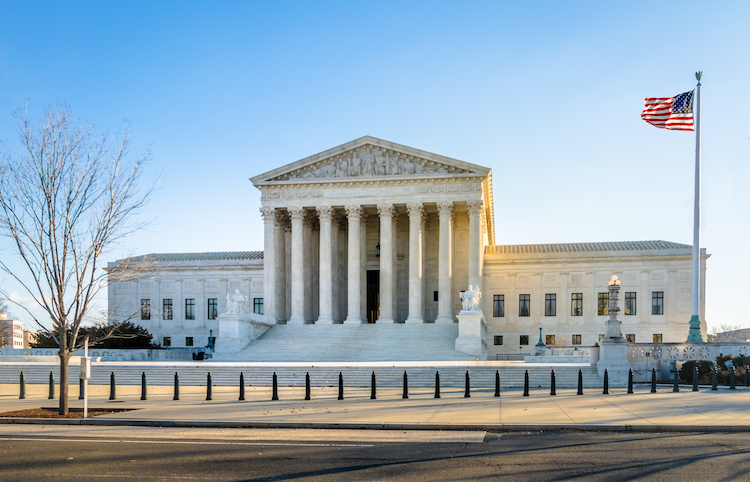Supreme Court Clarifies “Safety Valve” in Federal Criminal Sentencing Laws

In Pulsifer v. United States, 601 U.S. ____ (2024), the U.S. Supreme Court narrowly interpreted 18 U.S.C. §3553(f ), which establishes eligibility for a “safety valve” for defendants to avoid mandatory minimum prison sentences. By a vote of 6-3, the Court adopted the Government’s view of the three-prong test for evaluating a defendant’s prior criminal history, holding that a defendant must satisfy each of the conditions to be eligible.
Facts of the Case
After pleading guilty to distributing at least 50 grams of methamphetamine, petitioner Mark Pulsifer faced a mandatory minimum sentence of 15 years in prison. At sentencing, he sought to take advantage of the “safety valve” provision of federal sentencing law, which allows a sentencing court to disregard the statutory minimum if a defendant meets five criteria. Among those is the criminal history requirement, set out in Paragraph (f)(1). It requires that the sentencing court find that:
(1) the defendant does not have—
(A) more than 4 criminal history points, excluding any criminal history points resulting from a 1-point offense, as determined under the sentencing guidelines;
(B) a prior3-point offense, as determined under the sentencing guidelines; and
(C) a prior2-point violent offense, as determined under the sentencing guidelines.
The Government argued that Pulsifer could not satisfy that requirement because he had two prior three-point offenses totaling six criminal- history points. In the Government’s view, each of those prior offenses disqualified him under Subparagraph B and the six total points disqualified him under Subparagraph A.
Meanwhile, Pulsifer maintained that he remained eligible. He noted that his criminal record lacked a two-point violent offense, as specified in Subparagraph C. And in his view, only the combination of the items listed in the subparagraphs could prevent him from getting safety-valve relief. The District Court sided with the Government, and the Eighth Circuit Court of Appeals affirmed.
Supreme Court’s Decision
The U.S. Supreme Court affirmed, with Justice Elena Kagan writing on behalf of the six-member majority. The Court held that a defendant facing a mandatory minimum sentence is eligible for safety-valve relief under 18 U. S. C. §3553(f)(1) only if he satisfies each of the provision’s three conditions. In other words, a defendant is eligible only if he does not have more than four criminal-history points, does not have a prior three-point offense, and does not have a prior two-point violent offense.
In reaching its decision, the Court evaluated the two different interpretations of the provision. Under Pulsifer’s interpretation the word “and” joins three features of a defendant’s criminal history into a single disqualifying characteristic; accordingly, a defendant is ineligible for the safety valve only if he has the items listed in Subparagraphs A, B, and C in combination. Conversely, in the Government’s view, “and” connects three criminal-history conditions, all of which must be satisfied to gain safety-valve relief. In other words, the court must find the defendant does not have A, does not have B, and does not have C.
To decide between the two, the majority looked to the content of Paragraph(f)(1)’s three subparagraphs, including what they say, how they relate to each other, and how they fit with other pertinent law. “And indeed, that inquiry into text and context makes Paragraph (f )(1)’s meaning clear,” Justice Kagan wrote. “The paragraph creates an eligibility checklist. It specifies three necessary conditions for safety-valve relief—that the defendant not have more than four criminal-history points, not have a prior three- point offense, and not have a prior two-point violent offense.”
According to the majority, Pulsifer’s interpretation would create two statutory difficulties that the Government’s reading does not. “First, Subparagraph A would become superfluous— without any operative significance. That is because if a defendant has a three-point offense under Subparagraph B and a two-point offense under Subparagraph C, he will al- ways have more than four criminal-history points under Subparagraph A,” Justice Kagan wrote.
“Second, defendants’ eligibility for relief would not correspond to the seriousness of their criminal records. Instead, a defendant with numerous violent three- point offenses could get relief because he happens not to have a two-point offense. The content of Subparagraphs A, B, and C, especially as read against the Guidelines, thus answers the statutory puzzle here—reducing two grammatical possibilities to just one plausible construction.”
Previous Articles
Justices Skeptical of Trump Administration Tariffs
by DONALD SCARINCI on December 18, 2025
The U.S. Supreme Court heard oral arguments in Learning Resources, Inc. v. Trump (consolidated with...
SCOTUS Takes Up Key Election Case Involving Mail-In Ballots
by DONALD SCARINCI on December 17, 2025
The U.S. Supreme Court recently granted certiorari in a key election case, Watson v. Republican Nat...
SCOTUS Adds Second Amendment Case to Docket
by DONALD SCARINCI on November 27, 2025
The U.S. Supreme Court will consider another important Second Amendment case this term. The latest ...
The Amendments
-
Amendment1
- Establishment ClauseFree Exercise Clause
- Freedom of Speech
- Freedoms of Press
- Freedom of Assembly, and Petitition
-
Amendment2
- The Right to Bear Arms
-
Amendment4
- Unreasonable Searches and Seizures
-
Amendment5
- Due Process
- Eminent Domain
- Rights of Criminal Defendants
Preamble to the Bill of Rights
Congress of the United States begun and held at the City of New-York, on Wednesday the fourth of March, one thousand seven hundred and eighty nine.
THE Conventions of a number of the States, having at the time of their adopting the Constitution, expressed a desire, in order to prevent misconstruction or abuse of its powers, that further declaratory and restrictive clauses should be added: And as extending the ground of public confidence in the Government, will best ensure the beneficent ends of its institution.





